The Peterbald cat is a loyal and affectionate feline companion. What they lack in hair they make up for in affection, playfulness, and loyalty, earning them the compliment of being a "dog-like" cat.
A product of Russian breeding, Peterbalds are always eager to interact with their humans and get involved in daily household activities. Plus, shedding is never a problem with Peterbalds—they are either bald or covered in velvety fuzz that is delightful to touch.
Learn more about the Peterbald cat, including their history, temperament, and care needs.
Breed Overview
Personality: Friendly, affectionate, interactive, outgoing, intelligent
Weight: Up to 14 pounds
Length: Up to 17 inches
Coat Length: Hairless, flock, chamois, brush, or straight
Coat Colors: White, black, red/orange, gray, fawn, or lilac
Coat Patterns: Solid, bicolor, tabby, or color point
Eye Color: Gold, green, or blue
Lifespan: Up to 15 years
Hypoallergenic: Yes
Origin: Russia
Peterbald Cat Characteristics
This medium- to large-sized cat is fully grown within two years, but is ready and willing to be an active member of the family as soon as you bring them home as a kitten. A Peterbald is naturally outgoing and friendly, and wants to be involved in any activities that might be happening around the house. When everyone settles down, this kitty is happy to nestle onto a lap for quiet cuddles.
| Affection Level | High |
| Friendliness | High |
| Kid-Friendly | High |
| Pet-Friendly | High |
| Exercise Needs | Medium |
| Playfulness | High |
| Energy Level | Medium |
| Trainability | High |
| Intelligence | High |
| Tendency to Vocalize | Medium |
| Amount of Shedding | Low |
History of the Peterbald Cat
A newer cat breed, the Peterbald was first developed in 1994 when a Russian breeder named Olga S. Mironova crossed an Oriental shorthair cat with a Don Sphynx cat. The resulting breed is now called the Peterbald after its popularity among cat enthusiasts of St. Petersburg, Russia.
The Peterbald breed was accepted by The International Cat Association (TICA) in 1997 and was recognized for championship status in 2005. TICA accepted the breed's brush coat variety for championship status in May 2008; one of the first brush coat Peterbald cats to achieve championship status was named Blue Belle.
Today, though relatively rare, the breed is recognized by the Cat Fanciers' Association (CFA).
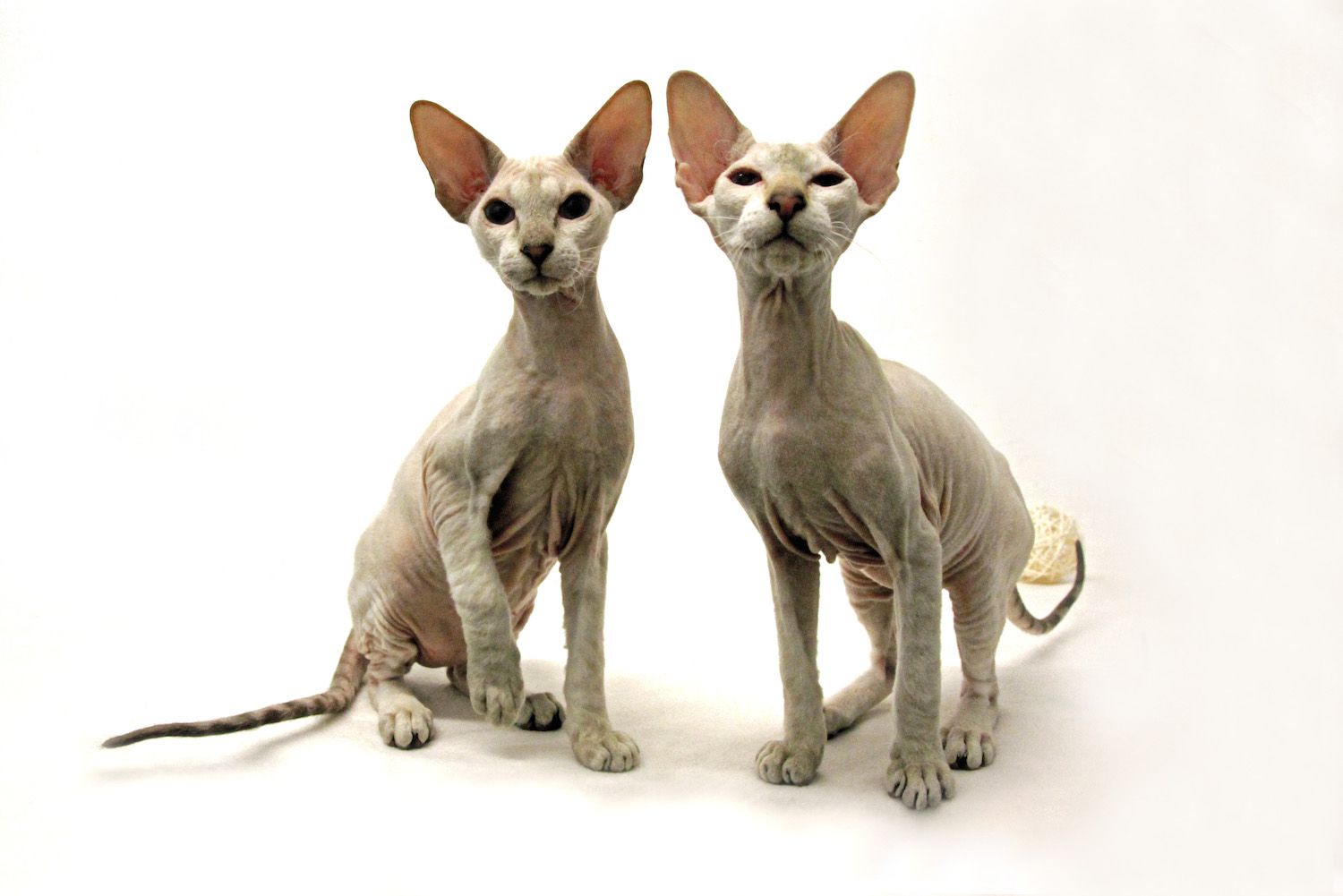
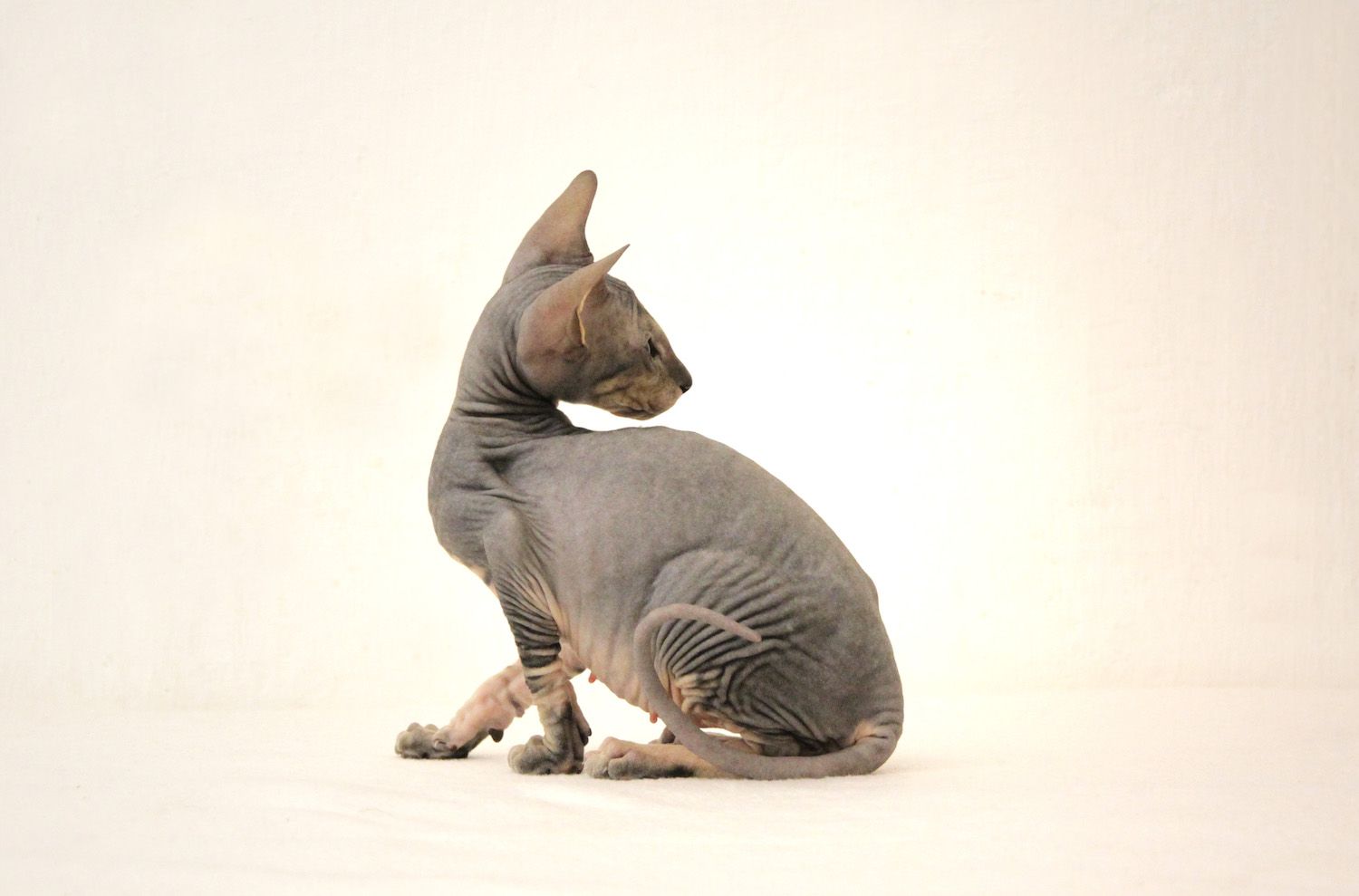
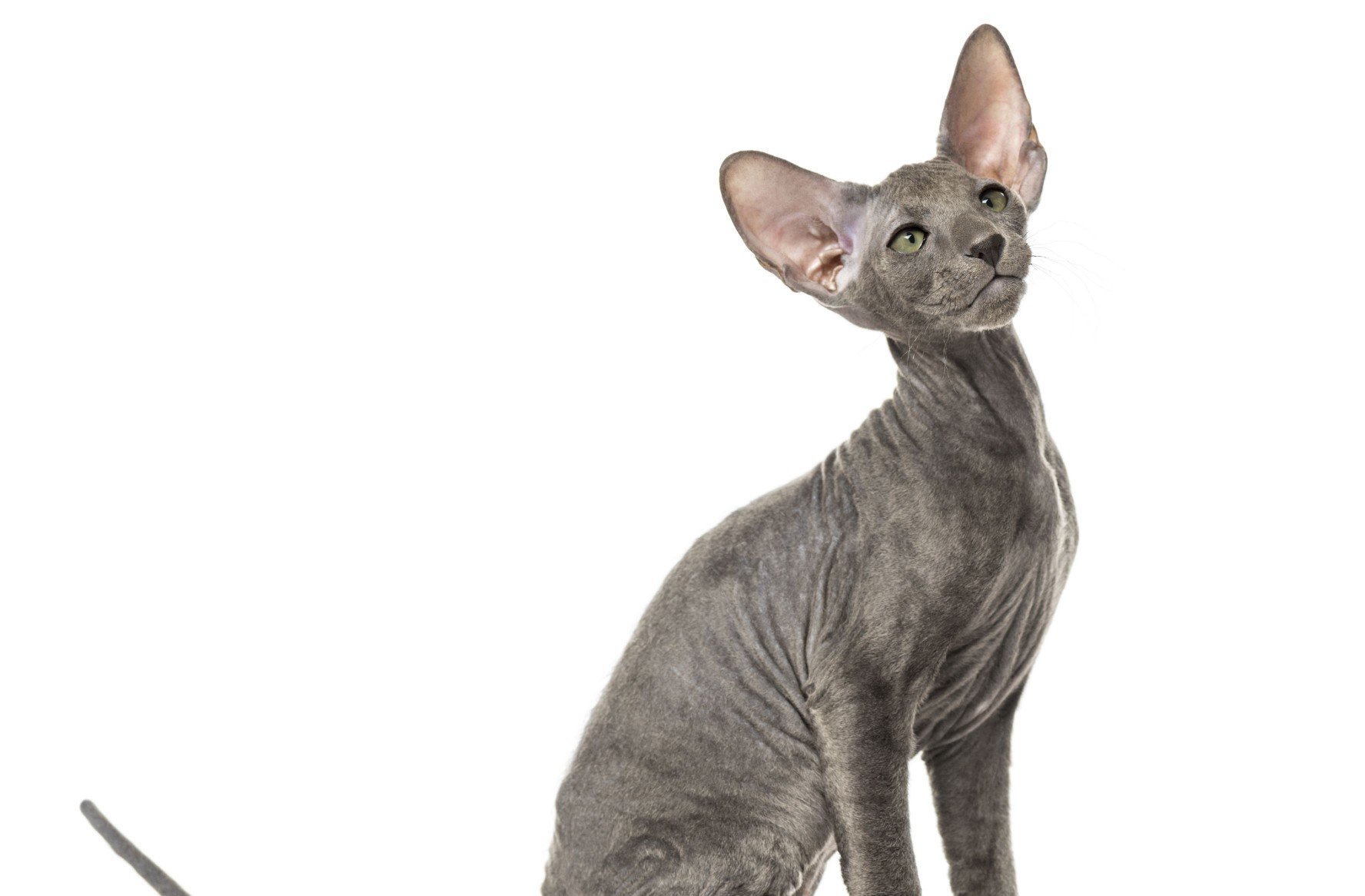
Peterbald Cat Care
The Peterbald cat is generally considered to be a low-maintenance breed. Their skin does require some extra care and attention, and these active cats love to interact and play with their family.
Grooming
Potential Peterbald cat parents won't need to worry much about shedding, but the hairless varieties benefit from an occasional bath or wipe-down so that skin oils don't build up and cause irritation. These cats should be kept indoors because their lack of hair causes them to get cold very easily.
Like all cats, Peterbalds also need to have their nails trimmed often, teeth brushed regularly, and ears checked and cleaned as needed.
Exercise
Peterbalds are very intelligent and can learn tricks like dogs. These active and highly athletic cats love nothing more than to spend their time playing with their humans, and they're eager to participate in games with toys or puzzles.
Because the Peterbald is so active and playful—and craves interaction with family—they make an excellent family pet. However, playtime with children or other pets should generally be supervised, as the cat's lack of fur means that they're vulnerable to injury.
Common Health Problems
The Peterbald is a generally healthy breed, but as with all breeds, they do have a few health concerns that you should be aware of. Those include:
- Sensitive skin: Because many Peterbald cats are hairless, sunburn, sensitivity to hot and cold weather, and other skin issues are potential concerns. Their delicate skin can also be easily injured, such as when playing with a cat companion or roughhousing with children.
- Progressive retinal atrophy: This condition affects the eyes, leading to loss of vision over time. It can result in blindness.
Otherwise, these cats are associated with surprisingly few breed-related health issues, provided they are properly cared for and receive scheduled vaccinations.
Appearance
The Peterbald’s hair varies in type, from a fuzzy velour coat to a completely “nude,” hairless body. There’s even an “ultra-bald” type that doesn’t even have whiskers or eyebrows (and their skin often feels sticky to the touch). Hairless Peterbalds have the Peterbald gene, and finding a completely hairless one is rare.
Interestingly, a Peterbald's coat at birth may not represent their adult appearance. Peterbalds' coats can change significantly throughout the first two years of life. Their hair texture can change, or they may grow or lose hair.
The Peterbald retains distinct characteristics from their ancestry. They owe their variable hair, dexterous front paws, and wrinkly skin to the Don Sphynx, while their long, lithe body and oblong head shape can be attributed to the Oriental shorthair.
One unique feature about Peterbalds is that they have long front toes with webbing, which allows them to hold and manipulate toys and other items.
Diet and Nutrition
Like all breeds, the Peterbald cat can be susceptible to weight-related issues such as obesity or heart disease, so they should be fed a high-protein, high-quality diet and receive plenty of exercise in the form of playtime with their families.
The good news is that, also due to their lack of fur, Peterbalds typically have a faster metabolism than cats with full coats, which means that they have healthy appetites; their high metabolism also helps them heal faster than fully-coated kitties when it comes to wounds or scratches.
Where to Adopt or Buy a Peterbald Cat
Peterbald cats are still somewhat rare, so it may be difficult to find a breeder for a Peterbald kitten; additionally, hairless cats are often sold for high prices. They can cost around $2,000 on average.
If possible, talk to other Peterbald cat parents, reputable breeders, and rescue groups to learn more about locating this particular breed.
Peterbald Cat Overview
Peterbald cats are exceptionally outgoing and energetic. They are a smart and independent breed that will form strong bonds with their family members, including other cats (and even dogs). These energetic cats are actually considered to be rather "dog-like" in that they are affectionate and cuddly while also wanting to be involved in the day-to-day activities of the household. In addition, like some dogs, they tend to use their voices to communicate with their humans.
Pros of Peterbald Cats
- Social and affectionate
- Generally healthy
- Fun to play or just interact with
Cons of Peterbald Cats
- Highly sensitive to temperature extremes
- Susceptible to injury
- Difficult to find and expensive
More Cat Breeds and Further Research
If you’re interested in similar breeds, check out:
- Sphynx
- Bambino
- Siamese
Otherwise, check out all of our other cat breed profiles.
- How much does a Peterbald cat cost?
They can cost up to $2,000 due to their rarity and popularity.
What is the difference between a sphynx and a Peterbald cat?Though similar in appearance, the Peterbald and sphynx are distinct cat breeds. The Peterbald can have various coat lengths, including hairless, and is the result of crossing the Donskoy and Oriental shorthair. The sphynx is nearly hairless with peach fuzz, and is the result of genetic mutation.
Are Peterbald cats hairless?Some Peterbalds are completely bald, while others have velvety soft fuzz. The character of their coats can also change throughout the first two years of life.
Related Article
 cat-basic-training
cat-basic-trainingHow to Socialize Your Kitten
All kittens require early socialization in order to become good pets. It helps kittens learn to int
 cat-nutrition-and-food
cat-nutrition-and-foodCan Dogs Eat Raw Chicken Feet?
Many pet stores stock raw or dehydrated treats for dogs, including chicken feet. Some companies tou
 cat-reproductive-health
cat-reproductive-healthHow Do I Tell If a Cat is a Girl or a Boy?
Knowing how to tell if a cat is a boy or a girl isn't always as apparent as you'd think. Co
 cat-preventative-care
cat-preventative-careHow Often Should Your Cat Go to the Vet?
Cats are one of the most popular household pet in the US, residing in about 25 percent of U.S. home
 cat-treatments
cat-treatmentsAzithromycin for Cats
Azithromycin is an antibiotic that is sometimes prescribed to cats for bacterial infections, especi
 cat-symptoms
cat-symptomsCat Seizures: Causes and Treatment
Cat seizures occur as a result of abnormal electrical discharges in the brain and manifest in vario
 cat-symptoms
cat-symptomsSwollen Eyes in Cats
A cat's eyes are one of their most alluring features. From their big almond shape to their stun
 short-haired-cat-breeds
short-haired-cat-breedsChausie: Cat Breed Profile, Characteristics & Care
The Chausie cat is an ancient, hybrid wildcat/domestic cat breed that originated in Egypt thousands
About FleaFree Feline
We are a premier digital platform committed to delivering high-quality content to our readers. Our mission is to provide accurate, reliable, and engaging information that adds value to our audience's daily lives.
Our team consists of experienced content creators and subject matter experts who uphold the highest standards of professionalism. In an era of information overload, we curate content with care, ensuring our users receive only the most relevant and trustworthy information.
Beyond just reporting facts, we focus on depth and context. Through expert analysis, comprehensive research, and clear presentation, we help our audience gain meaningful insights and make informed decisions.
We take pride in being a trusted information source for our growing community of readers. Our user-first approach means we continuously adapt to provide content that meets our audience's evolving needs and interests.
Innovation and excellence drive everything we do. We're committed to improving our platform and services to deliver the best possible experience for our users.


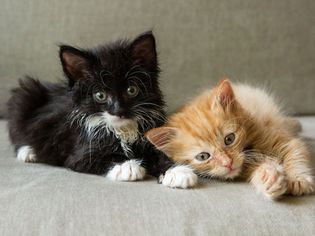

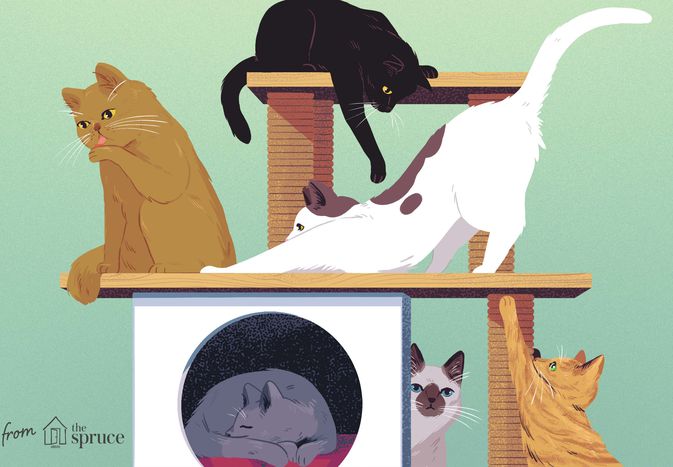
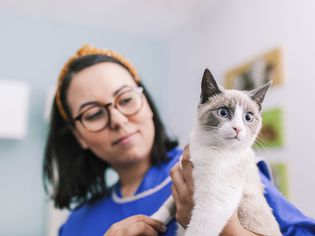
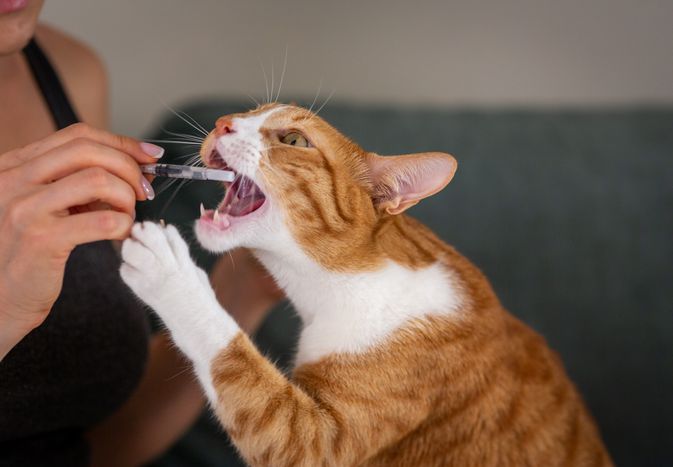
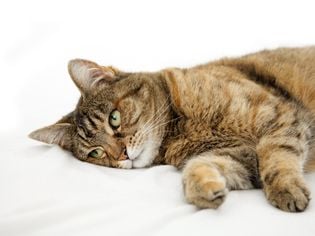
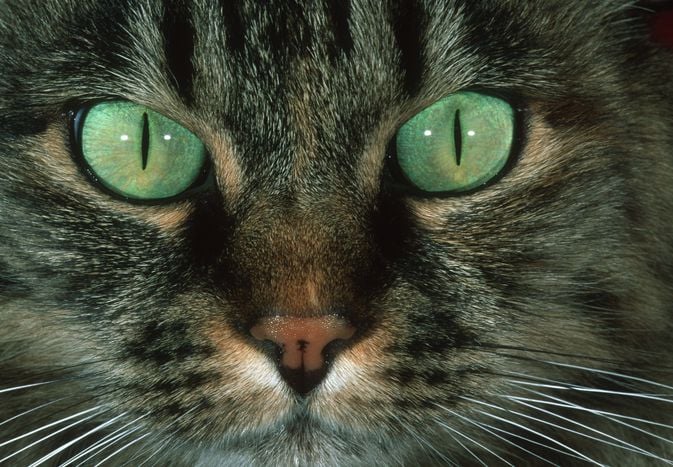
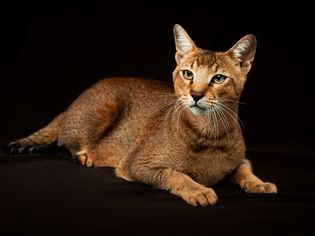
Comments on " Peterbald Cat: Breed Profile, Characteristics & Care" :